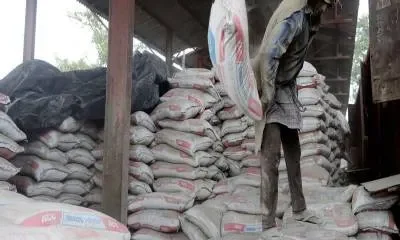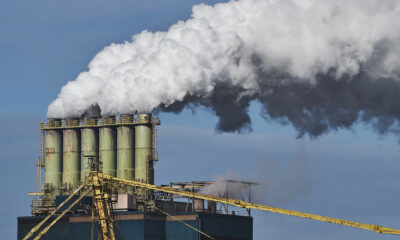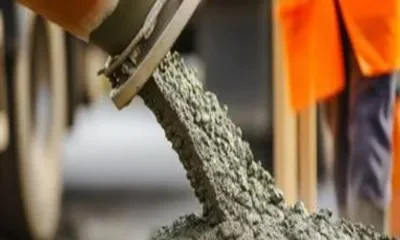Economy & Market
Consolidation in cement industry: Gobbling Up!
Published
13 years agoon
By
admin
The cement industry has been going through consolidation phase with large Indian cement players preying on smaller ones and foreign cement majors acquiring controlling stake in Indian majors. Prakash Patil looks at the M&A scenario and what it holds for the future of cement industry in India.It’s mergers and acquisitions season in the Indian cement industry and the latest big ticket deal is the acquisition of 51 per cent controlling stake by Irish cement major CRH in the two 2.4 MTPA plants of the Jaypee Group in Gujarat. A buoyant trend in prices could reportedly fetch the Jaypee Group at least $160 per tonne as replacement value, as it puts on the block its hived-off plants in western (2 units of 2.4 MT each) and southern India (1 unit of 5 MTPA). The deal for the two 2.4 MTPA plants is reportedly valued at Rs 4,200 crore. However, as Jaypee Group has its third plant with a capacity of 5 MTPA in Andhra Pradesh and the three plants would be valued at about Rs 9,000 crore. For CRH, this will be the second acquisition in India. The company had forayed into India in 2008 with the acquisition of 50 per cent stake in Hyderabad-based cement producer My Home Industries, which had an installed capacity of 4.2 MTPA.The latest CRH-Jaypee Group deal is an indication of the churning the Indian cement industry is going through over the last decade or so. The big fishes are on the prowl to gobble up smaller fries in the business and considering that there are 139 large cement plants and 365 mini cement plants in the country currently with 40 major and mid-size players having pan-India presence, the opportunities for acquisitions for the large cement players are enticing. And, it’s not just the small fries that are on the radar of the big players, even some of the biggest cement companies have been taken over in the past and many more are being wooed. After all, the cement business of Jaypee Group being acquired by CRH makes Jaypee Group the third largest cement player in India after UltraTech and Ambuja Cements.The big ticket dealsApart from the latest big ticket deal between the CRH-Jaypee Group, there have been quite a few large takeovers since 1999. When Gujarat Ambuja Cements (GACL) picked up 7.2 per cent stake in India’s then largest cement manufacturer ACC at a price of Rs 370 per share when the market price hovered around Rs 240 per share from the Tatas in December 1999, it created sensation. Later in 2000, GACL acquired the balance 7.2 per cent from the Tatas to become the largest shareholder in ACC. But the twist to this tale came when Swiss cement major Holcim picked up 14.8 per cent stake in Gujarat Ambuja Cements (later to merge with Ambuja Cements Eastern to become Ambuja Cements) for Rs 2,100 crore through the creeping acquisition route and later picked up another 20 per cent stake for Rs 2,400 crore. Subsequently, Holcim hiked its stake in Ambuja Cements to over 50 per cent, thereby acquiring complete management control over Ambuja Cements. The Holcim transaction and valuation provides an excellent indication of the extent to which investors and strategic players are ready to buy the India growth story. In 2005, Holcim acquired stake in ACC at an enterprise value (EV) of $111 per tonne and the next year Holcim acquired stake in Ambuja Cement at an EV of $193 per tonne. In 2007, Holcim again increased its stake in Ambuja Cements at an EV of $301 per tonne!With this acquisition, Holcim also acquired management control over ACC as Ambuja Cements had hiked its stake in ACC to more than 50 per cent. So, Holcim upped the ante for other global cement companies by acquiring majority stake and management control over two of India’s largest cement companies.Lafarge, the French cement major, got late into action in the M&A space and decided to take the acquisition route to fast track it cement business in India. The company declared in 2010 that it was open to consolidation in India and, according to Bruno Lafont, Chairman & CEO, Lafarge, the timeframe for acquisitions was the next five years. "We see consolidation happening (in the cement industry) in India in the mid term period. We are confident of our ability to deliver our investments in India and are open to seizing new opportunities, be it consolidation or greenfield projects," said Lafont while inaugurating the clinker line at Lafarge India’s cement plant in January 2010 at Sonadih in Chhattisgarh. The company entered the Indian market in 1999 with the acquisition of Tata Steel’s cement plant. This was followed by the purchase of the Raymond Cement facility in 2001 and the acquisition of L&T’s concrete business in 2008.The takeover of L&T’s cement business by Grasim Industries in June 2003 also created buzz in the market since this takeover catapulted Grasim Industries (later its cement division being merged into UltraTech Cement) from the third position to the numero uno position in India. After the takeover, UltraTech’s installed capacity went up from 13 MTPA to 31 MTPA. Grasim Industries had to shell out Rs 2,200 crore over a period of three years for a majority stake in Ultratech Cement. Today, UltraTech maintains its leadership position with an installed capacity of 52 MTPA, with Holcim at the no. 2 position with combined capacity of 45 MTPA through ACC and Ambuja Cement.These are just a few samples of big ticket deals that have happened in the cement sector in India since late nineties. There have been many more big and small takeovers and mergers by domestic players since mid-1990s and by foreign players since late-1990s (see box). According to the data published by the Department of Industrial Policy and Promotion, the cement sector attracted foreign direct investments (FDI) worth US$ 2.62 bn between April 2000 to May 2012, which is an ample indication of the fact that the cement sector has been attracting foreign investors in droves.The key M&A triggersClearly, the cement biggies have gone on a shopping spree since during the last decade or so. And not without reason. There are compelling reasons why domestic and foreign cement majors appear to be so bullish on India. "Major reasons for consolidation were excess capacity and entry of foreign players who wanted a pie of untapped Indian market…Apart from above two reasons, another factor that is leading to consolidation is the rising cost of greenfield capacity which also tends to have longer gestation period. Existing players are eyeing companies who are unable to meet rising cost of raw materials due to increasing imported coal prices. On the other hand, the top players who want to spread their reach are tapping such companies as it saves on time factor of greenfield capacities," says Alok Sanghi, Director, Sanghi Industries.
Commenting on the reasons for consolidation, Jailesh Dalal, Director, JAYCEE Buildcon (India), says "The Indian cement industry is fragmented and large domestic and international players would try to consolidate their position going forward for geographical diversification, concentrated focus on operational efficiency, challenges in acquiring land/limestone resources, exit of smaller players and divesture of cement businesses by diversified groups."Now, let’s look at each of these reasons why Indian cement industry is passing through the consolidation phase.Overcapacity
During 2007-12, cement producers added capacity to the tune of 150 MTPA, thereby almost doubling the total installed capacity to 303 MTPA in FY2012-13. According to a report by research firm RNCOS, "It is anticipated that the cement industry players will continue to increase their annual cement output in coming years and the country’s cement production will grow at a compound annual growth rate (CAGR) of around 12 per cent during 2011-12 to 2013-14." According to projections, by 2017 the total capacity nationally would add up to 470 MTPA.The increase in capacities by many of the Indian companies was in anticipation of demand from the infrastructure sector which failed to materialise. In a situation where demand fails to keep pace with supply, the capacity utilization rate is bound to decelerate. The capacity utilisation rate for the cement industry in India has dropped from 93 per cent in FY2006-07 to 75 per cent in FY2011-12. The fall-out of such overcapacity situation is that the cement prices are likely to come under downward pressure which would make survival difficult for smaller cement companies with capacities less than 1 MTPA and therefore vulnerable for takeover. However, the fact that cement majors have built up capacities in advance is an indication that these companies expect demand for cement to remain firm due to construction activity, which is expected to gather momentum due to government’s policy to boost investments in infrastructure.Infrastructure PotentialIndia’s high housing and infrastructure deficits points to the huge potential for development of housing and infrastructure. The cement sector will benefit hugely as and when the momentum in housing and infra development picks up. This potential for development has been attracting major players in hordes from across the world. The demand for cement, being a derived demand, primarily depends on the industrial construction, real estate business, construction activities and investments in the infrastructure sector.Currently, the housing sector consumes 55-60 per cent of cement produced in India and this is expected to change in the next few years when the emphasis will shift on infrastructure development such as roads, bridges, airports, and railways, which will consume a significant percentage of cement produced in the country. The consumption of cement in agriculture is negligible today; but with a greater thrust on agriculture and the suggested ‘second green revolution’, this sector too will extensively use cement to build warehouses and other logistics.But instead of opting to set up cement plants themselves, it makes sense for the foreign players to take the acquisition route not just to make foray into India but also ramp up capacity quickly. The high potential for growth in demand for cement is amply evident from the fact that the per capita cement consumption in India was 230 kg in 2010, which is almost half of the global average of around 450 kg and way below the Chinese average per capita consumption of 1220 kg. Hence, domestic and foreign cement companies remain bullish on the prospects of cement industry in India.High capital cost & long gestation periodA cement plant is typically a capital intensive business and to establish a greenfield project takes about three years. The cost of setting up a greenfield capacity has reportedly shot up from $120 per tonne to $160 per tonne in just two years. Besides, the cement business has a long gestation period and, depending on the market situation, the break-even point may extend to three-four years at an operating level of 70-75 per cent. The high capital cost and long gestation period makes establishing a new cement plant an unattractive business proposition. Hence, established and large players may prefer to poach on the existing and established players to beat the competition and increase their market share. "The cement sector is slowly heading for a major consolidation as greenfield projects are becoming difficult to set up due to increased hassles in areas like mineral concession, land acquisition and related environmental and operational issues. This may lead the cement industry in India to be consolidated in the hands of a few major giant cement companies and only a few cement companies with single or smaller capacity plants shall continue to operate purely due to regional and local factors," says P K Ghosh, Chairman, Ercom Engineers.Entry barriers & cumbersome proceduresDifficulty in accessing limestone reserves, which is a key input in cement production, acts as a significant entry barrier for new entrants. To overcome this difficulty, takeover of companies with access to limestone reserves is the easiest route to crossing the entry barrier. No wonder, none of the foreign cement majors tried to set up a greenfield cement plant as prospecting for limestone reserves is a time-consuming process. Even if the limestone reserves are established, getting the mining rights, railway siding, etc. can reportedly take upto 7-8 years, with only 25 per cent chance of striking enough limestone reserves to last for the entire economic life-span of the plant. Hence, acquisition is bound to pick up further momentum as more cement majors enter the Indian market.The benefits of consolidationThe consolidation in the cement industry would prove to be beneficial both for the acquiring companies as well as for the cement industry. Some of the benefits that would ensue from consolidation are as follows:
Economies of scaleA large cement company enjoys the benefits of economies of scale. Mergers and acquisitions bring about consolidation of capacities which adds up the benefits of scale. The economies of scale enable the company to reduce the production costs so that it can reduce the cement price to maintain an edge over the competitors.Extended reach and increased revenuesWhen a company takes over the production and distribution facilities of another company, it immediately extends its geographical reach and increases its market share on account of expansion of the market for its product. The market expansion helps in ramping up the revenues of the company within a short span of time. The enhanced geographical reach may also result in substantial reduction in transportation costs which are quite high as cement is a bulk commodity.Technological upgradationThe new energy-efficient but capital-intensive "dry" production technology offers to the companies efficiencies that provide vital edge over the companies not deploying such technologies. Small manufacturers may not possess the requisite financial resources or production volumes to be able to afford the most efficient technology, which puts them at a competitive cost disadvantage. The entry of foreign players has led to technological upgradation and innovation in Indian cement industry. "Despite the fact that the technology used by Indian cement companies is among the best in the world, more innovation is required to ensure that cement plans are not only environment-friendly, but also low-cost in nature. M&As in last decade has helped Indian firms propel to global standards. Foreign firms who took over Indian firms have made most of the investments in India in the last decade for upgrading technology and raising capacity. With higher spend on technology, existing players are likely to focus more on ready mix concrete, bulk sales and blended cement to ensure improvement in quality as well as environment consciousness with sustainable construction," says Sanghi.The Road AheadGoing forward, the acquisitions space is going to get hotter, with lot of small and mid-sized cement companies up for grabs. Once the economies of scale kick in on account of consolidation, the cement prices are likely to remain competitive yet remunerative. This would benefit both the cement companies as well as cement consumers. Summarising the benefits of consolidation, Dalal says, "M&As would largely have a positive impact in the cement industry in India on account of value creation, economies of scale and cost efficiencies, operational and supply chain efficiencies, higher competitiveness, technology transfer, better research and development and high quality products, financial leveraging and optimization of profitability and increased focus on health, safety and environment. In the future as well, M&As would augur well for the industry as it would bring world-class technology, products and operational efficiencies into India." Sanghi too feels that M&As would be beneficial and says, "M&As in cement industry is likely to bring pricing power, improve profitability and reduce cost of branding for top players. Through M&As, top players would have higher vertical integration and locational advantage with respect to sourcing raw materials and market reach."Of course, there is always the possibility of major companies forming a cartel to keep the cement prices artificially high, but with the Competition Commission of India keeping a vigil over the production figures, capacity utilization and cement prices, the cement companies would be wary of indulging in such malpractices. Sanghi too dismisses fear of cartelization saying, "If there was (cartelisation) as is claimed, cement companies would not have reported losses in any quarter. Also, prices would have been same across the year, if there was cartelization. But every year, cement prices fall during monsoon because there is a slowdown in demand; while prices rise on and around Diwali due to surge in demand from real estate."To sum up, consolidation is good for the cement industry and there are sunny days ahead for the industry in times to come.
You may like
Concrete
Technology plays a critical role in achieving our goals
Published
2 weeks agoon
December 24, 2025By
admin
Arasu Shanmugam, Director and CEO-India, IFGL, discusses the diversification of the refractory sector into the cement industry with sustainable and innovative solutions, including green refractories and advanced technologies like shotcrete.
Tell us about your company, it being India’s first refractory all Indian MNC.
IFGL Refractories has traditionally focused on the steel industry. However, as part of our diversification strategy, we decided to expand into the cement sector a year ago, offering a comprehensive range of solutions. These solutions cover the entire process, from the preheater stage to the cooler. On the product side, we provide a full range, including alumina bricks, monolithics, castables, and basic refractories.
In a remarkably short span of time, we have built the capability to offer complete solutions to the cement industry using our own products. Although the cement segment is new for IFGL, the team handling this business vertical has 30 years of experience in the cement industry. This expertise has been instrumental in establishing a brand-new greenfield project for alumina bricks, which is now operational. Since production began in May, we are fully booked for the next six months, with orders extending until May 2025. This demonstrates the credibility we have quickly established, driven by our team’s experience and the company’s agility, which has been a core strength for us in the steel industry and will now benefit our cement initiatives.
As a 100 per cent Indian-owned multinational company, IFGL stands out in the refractory sector, where most leading players providing cement solutions are foreign-owned. We are listed on the stock exchange and have a global footprint, including plants in the United Kingdom, where we are the largest refractory producer, thanks to our operations with Sheffield Refractories and Monocon. Additionally, we have a plant in the United States that produces state-of-the-art black refractories for critical steel applications, a plant in Germany providing filtering solutions for the foundry sector, and a base in China, ensuring secure access to high-quality raw materials.
China, as a major source of pure raw materials for refractories, is critical to the global supply chain. We have strategically developed our own base there, ensuring both raw material security and technological advancements. For instance, Sheffield Refractories is a leader in cutting-edge shotcreting technology, which is particularly relevant to the cement industry. Since downtime in cement plants incurs costs far greater than refractory expenses, this technology, which enables rapid repairs and quicker return to production, is a game-changer. Leading cement manufacturers in the country have already expressed significant interest in this service, which we plan to launch in March 2025.
With this strong foundation, we are entering the cement industry with confidence and a commitment to delivering innovative and efficient solutions.
Could you share any differences you’ve observed in business operations between regions like Europe, India, and China? How do their functionalities and approaches vary?
When it comes to business functionality, Europe is unfortunately a shrinking market. There is a noticeable lack of enthusiasm, and companies there often face challenges in forming partnerships with vendors. In contrast, India presents an evolving scenario where close partnerships with vendors have become a key trend. About 15 years ago, refractory suppliers were viewed merely as vendors supplying commodities. Today, however, they are integral to the customer’s value creation chain.
We now have a deep understanding of our customers’ process variations and advancements. This integration allows us to align our refractory solutions with their evolving processes, strengthening our role as a value chain partner. This collaborative approach is a major differentiator, and I don’t see it happening anywhere else on the same scale. Additionally, India is the only region globally experiencing significant growth. As a result, international players are increasingly looking at India as a potential market for expansion. Given this, we take pride in being an Indian company for over four decades and aim to contribute to making Aatma Nirbhar Bharat (self-reliant India) a reality.
Moving on to the net-zero mission, it’s crucial to discuss our contributions to sustainability in the cement industry. Traditionally, we focused on providing burnt bricks, which require significant fuel consumption during firing and result in higher greenhouse gas emissions, particularly CO2. With the introduction of Sheffield Refractories’ green technology, we are now promoting the use of green refractories in cement production. Increasing the share of green refractories naturally reduces CO2 emissions per ton of clinker produced.
Our honourable Prime Minister has set the goal of achieving net-zero emissions by 2070. We are committed to being key enablers of this vision by expanding the use of green refractories and providing sustainable solutions to the cement industry, reducing reliance on burnt refractories.
Technology is advancing rapidly. What role does it play in helping you achieve your targets and support the cement industry?
Technology plays a critical role in achieving our goals and supporting the cement industry. As I mentioned earlier, the reduction in specific refractory consumption is driven by two key factors: refining customer processes and enhancing refractory quality. By working closely as partners with our customers, we gain a deeper understanding of their evolving needs, enabling us to continuously innovate. For example, in November 2022, we established a state-of-the-art research centre in India for IFGL, something we didn’t have before.
The primary objective of this centre is to leverage in-house technology to enhance the utilisation of recycled materials in manufacturing our products. By increasing the proportion of recycled materials, we reduce the depletion of natural resources and greenhouse gas emissions. In essence, our focus is on developing sustainable, green refractories while promoting circularity in our business processes. This multi-faceted approach ensures we contribute to environmental sustainability while meeting the industry’s demands.
Of course, this all sounds promising, but there must be challenges you’re facing along the way. Could you elaborate on those?
One challenge we face is related to India’s mineral resources. For instance, there are oxide deposits in the Saurashtra region of Gujarat, but unfortunately, they contain a higher percentage of impurities. On the magnesite side, India has deposits in three regions: Salem in Tamil Nadu, Almora in Uttarakhand, and Jammu. However, these magnesite deposits also have impurities. We believe the government should take up research and development initiatives to beneficiate these minerals, which are abundantly available in India, and make them suitable for producing high-end refractories. This task is beyond the capacity of an individual refractories company and requires focused policy intervention. While the government is undertaking several initiatives, beneficiation of minerals like Indian magnesite and Indian oxide needs to become a key area of focus.
Another crucial policy support we require is recognising the importance of refractories in industrial production. The reality is that without refractories, not even a single kilogram of steel or cement can be produced. Despite this, refractories are not included in the list of core industries. We urge the government to designate refractories as a core industry, which would ensure dedicated focus, including R&D allocations for initiatives like raw material beneficiation. At IFGL, we are taking proactive steps to address some of these challenges. For instance, we own Sheffield Refractories, a global leader in shotcrete technology. We are bringing this technology to India, with implementation planned from March onwards. Additionally, our partnership with Marvel Refractories in China enables us to leverage their expertise in providing high-quality refractories for steel and cement industries worldwide.
While we are making significant efforts at our level, policy support from the government—such as recognising refractories as a core industry and fostering research for local raw material beneficiation—would accelerate progress. This combined effort would greatly enhance India’s capability to produce high-end refractories and meet the growing demands of critical industries.
Could you share your opinion on the journey toward achieving net-zero emissions? How do you envision this journey unfolding?
The journey toward net zero is progressing steadily. For instance, even at this conference, we can observe the commitment as a country toward this goal. Achieving net zero involves having a clear starting point, a defined objective, and a pace to progress. I believe we are already moving at an impressive speed toward realising this goal. One example is the significant reduction in energy consumption per ton of clinker, which has halved over the past 7–8 years—a remarkable achievement.
Another critical aspect is the emphasis on circularity in the cement industry. The use of gypsum, which is a byproduct of the fertiliser and chemical industries, as well as fly ash generated by the power industry, has been effectively incorporated into cement production. Additionally, a recent advancement involves the use of calcined clay as an active component in cement. I am particularly encouraged by discussions around incorporating 12 per cent to 15 per cent limestone into the mix without the need for burning, which does not compromise the quality of the final product. These strategies demonstrate the cement industry’s constructive and innovative approach toward achieving net-zero emissions. The pace at which these advancements are being adopted is highly encouraging, and I believe we are on a fast track to reaching this critical milestone.
– Kanika Mathur
Concrete
Fornnax Unveils the World’s Largest NPD and Demo Centre to Accelerate Global Recycling Innovation
Published
1 month agoon
December 3, 2025By
admin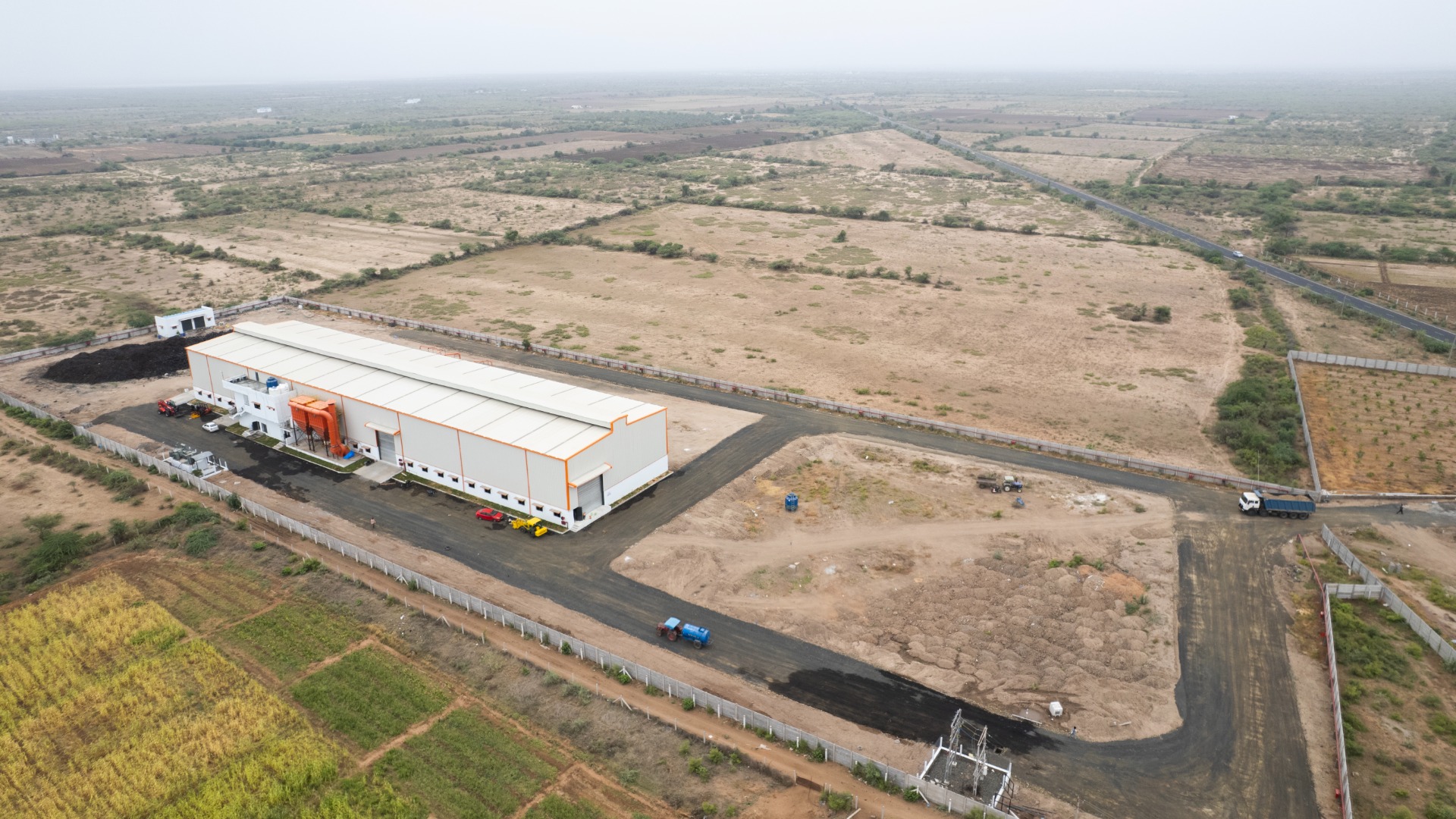
A 12-acre innovation campus enables Fornnax to design, test and validate high-performance recycling solutions at global standards in record time.
Fornnax has launched one of the world’s largest New Product Development (NPD) centres and demo plants, spanning more than 12 acres, marking a major step toward its vision of becoming a global recycling technology leader by 2030. Designed to accelerate real-world innovation, the facility will enable faster product design cycles, large-scale performance validation, and more reliable equipment for high-demand recycling applications.
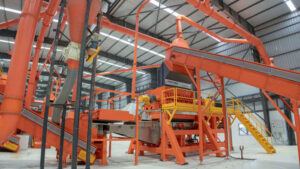
At the core of the new campus is a live demo plant engineered to support application-specific testing. Fornnax will use this facility to upgrade its entire line of shredders and granulators—enhancing capacity, improving energy efficiency, and reducing downtime. With controlled test environments, machines can be validated for 3,000 to 15,000 hours of operation, ensuring real-world durability and high availability of 18–20 hours per day. This approach gives customers proven performance data before deployment.
“Innovation in product development is the key to becoming a global leader,” said Jignesh Kundariya, Director and CEO of Fornnax. “With this facility, we can design, test and validate new technologies in 6–8 months, compared to 4–5 years in a customer’s plant. Every machine will undergo rigorous Engineering Build (EB) and Manufacturing Build (MB) testing in line with international standards.”
Engineering Excellence Powered by Gate Review Methodology
Fornnax’s NPD framework follows a structured Gate Review Process, ensuring precision and discipline at every step. Projects begin with market research and ideation led by Sales and Marketing, followed by strategic review from the Leadership Team. Detailed engineering is then developed by the Design Team and evaluated by Manufacturing, Service and Safety before approval. A functional prototype is built and tested for 6–8 months, after which the design is optimised for mass production and commercial rollout.
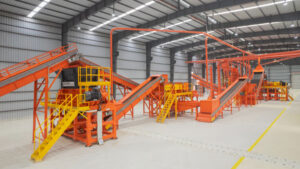
Open-Door Customer Demonstration and Material Testing
The facility features an open-door demonstration model, allowing customers to bring their actual materials and test multiple machines under varied operating conditions. Clients can evaluate performance parameters, compare configurations and make informed purchasing decisions without operational risk.
The centre will also advance research into emerging sectors including E-waste, cables, lithium-ion batteries and niche heterogeneous waste streams. Highly qualified engineering and R&D teams will conduct feasibility studies and performance analysis to develop customised solutions for unfamiliar or challenging materials. This capability reinforces Fornnax’s reputation as a solution-oriented technology provider capable of solving real recycling problems.
Developing Global Recycling Talent
Beyond technology, the facility also houses a comprehensive OEM training centre. It will prepare operators and maintenance technicians for real-world plant conditions. Trainees will gain hands-on experience in assembly, disassembly and grinding operations before deployment at customer sites. Post-training, they will serve as skilled support professionals for Fornnax installations. The company will also deliver corporate training programs for international and domestic clients to enable optimal operation, swift troubleshooting and high-availability performance.
A Roadmap to Capture Global Demand
Fornnax plans to scale its offerings in response to high-growth verticals including Tyre recycling, Municipal Solid Waste (MSW), E-waste, Cable and Aluminium recycling. The company is also preparing solutions for new opportunities such as Auto Shredder Residue (ASR) and Lithium-Ion Battery recovery. With research, training, validation and customer engagement housed under one roof, Fornnax is laying the foundation for the next generation of recycling technologies.
“Our goal is to empower customers with clarity and confidence before they invest,” added Kundariya. “This facility allows them to test their own materials, compare equipment and see real performance. It’s not just about selling machines—it’s about building trust through transparency and delivering solutions that work.”
With this milestone, Fornnax reinforces its long-term commitment to enabling industries worldwide with proven, future-ready recycling solutions rooted in innovation, engineering discipline and customer collaboration.
Concrete
Balancing Rapid Economic Growth and Climate Action
Published
2 months agoon
November 20, 2025By
admin
Dr Yogendra Kanitkar, VP R&D, and Dr Shirish Kumar Sharma, Assistant Manager R&D, Pi Green Innovations, look at India’s cement industry as it stands at the crossroads of infrastructure expansion and urgent decarbonisation.
The cement industry plays an indispensable role in India’s infrastructure development and economic growth. As the world’s second-largest cement producer after China, India accounts for more than 8 per cent of global cement production, with an output of around 418 million tonnes in 2023–24. It contributes roughly 11 per cent to the input costs of the construction sector, sustains over one million direct jobs, and generates an estimated 20,000 additional downstream jobs for every million tonnes produced. This scale makes cement a critical backbone of the nation’s development. Yet, this vitality comes with a steep environmental price, as cement production contributes nearly 7 per cent of India’s total carbon dioxide (CO2) emissions.
On a global scale, the sector accounts for 8 per cent of anthropogenic CO2 emissions, a figure that underscores the urgency of balancing rapid growth with climate responsibility. A unique challenge lies in the dual nature of cement-related emissions: about 60 per cent stem from calcination of limestone in kilns, while the remaining 40 per cent arise from the combustion of fossil fuels to generate the extreme heat of 1,450°C required for clinker production (TERI 2023; GCCA).
This dilemma is compounded by India’s relatively low per capita consumption of cement at about 300kg per year, compared to the global average of 540kg. The data reveals substantial growth potential as India continues to urbanise and industrialise, yet this projected rise in consumption will inevitably add to greenhouse gas emissions unless urgent measures are taken. The sector is also uniquely constrained by being a high-volume, low-margin business with high capital intensity, leaving limited room to absorb additional costs for decarbonisation technologies.
India has nonetheless made notable progress in improving the carbon efficiency of its cement industry. Between 1996 and 2010, the sector reduced its emissions intensity from 1.12 tonnes of CO2 per ton of cement to 0.719 tonnes—making it one of the most energy-efficient globally. Today, Indian cement plants reach thermal efficiency levels of around 725 kcal/kg of clinker and electrical consumption near 75 kWh per tonne of cement, broadly in line with best global practice (World Cement 2025). However, absolute emissions continue to rise with increasing demand, with the sector emitting around 177 MtCO2 in 2023, about 6 per cent of India’s total fossil fuel and industrial emissions. Without decisive interventions, projections suggest that cement manufacturing emissions in India could rise by 250–500 per cent by mid-century, depending on demand growth (Statista; CEEW).
Recognising this threat, the Government of India has brought the sector under compliance obligations of the Carbon Credit Trading Scheme (CCTS). Cement is one of the designated obligated entities, tasked with meeting aggressive reduction targets over the next two financial years, effectively binding companies to measurable progress toward decarbonisation and creating compliance-driven demand for carbon reduction and trading credits (NITI 2025).
The industry has responded by deploying incremental decarbonisation measures focused on energy efficiency, alternative fuels, and material substitutions. Process optimisation using AI-driven controls and waste heat recovery systems has made many plants among the most efficient worldwide, typically reducing fuel use by 3–8 per cent and cutting emissions by up to 9 per cent. Trials are exploring kiln firing with greener fuels such as hydrogen and natural gas. Limited blends of hydrogen up to 20 per cent are technically feasible, though economics remain unfavourable at present.
Efforts to electrify kilns are gaining international attention. For instance, proprietary technologies have demonstrated the potential of electrified kilns that can reach 1,700°C using renewable electricity, a transformative technology still at the pilot stage. Meanwhile, given that cement manufacturing is also a highly power-intensive industry, several firms are shifting electric grinding operations to renewable energy.
Material substitution represents another key decarbonisation pathway. Blended cements using industrial by-products like fly ash and ground granulated blast furnace slag (GGBS) can significantly reduce the clinker factor, which currently constitutes about 65 per cent in India. GGBS can replace up to 85 per cent of clinker in specific cement grades, though its future availability may fall as steel plants decarbonise and reduce slag generation. Fly ash from coal-fired power stations remains widely used as a low-carbon substitute, but its supply too will shrink as India expands renewable power. Alternative fuels—ranging from biomass to solid waste—further allow reductions in fossil energy dependency, abating up to 24 per cent of emissions according to pilot projects (TERI; CEEW).
Beyond these, Carbon Capture, Utilisation, and Storage (CCUS) technologies are emerging as a critical lever for achieving deep emission cuts, particularly since process emissions are chemically unavoidable. Post-combustion amine scrubbing using solvents like monoethanolamine (MEA) remains the most mature option, with capture efficiencies between 90–99 per cent demonstrated at pilot scale. However, drawbacks include energy penalties that require 15–30 per cent of plant output for solvent regeneration, as well as costs for retrofitting and long-term corrosion management (Heidelberg Materials 2025). Oxyfuel combustion has been tested internationally, producing concentrated CO2-laden flue gas, though the high cost of pure oxygen production impedes deployment in India.
Calcium looping offers another promising pathway, where calcium oxide sorbents absorb CO2 and can be regenerated, but challenges of sorbent degradation and high calcination energy requirements remain barriers (DNV 2024). Experimental approaches like membrane separation and mineral carbonation are advancing in India, with startups piloting systems to mineralise flue gas streams at captive power plants. Besides point-source capture, innovations such as CO2 curing of concrete blocks already show promise, enhancing strength and reducing lifecycle emissions.
Despite progress, several systemic obstacles hinder the mass deployment of CCUS in India’s cement industry. Technology readiness remains a fundamental issue: apart from MEA-based capture, most technologies are not commercially mature in high-volume cement plants. Furthermore, CCUS is costly. Studies by CEEW estimate that achieving net-zero cement in India would require around US$ 334 billion in capital investments and US$ 3 billion annually in operating costs by 2050, potentially raising cement prices between 19–107 per cent. This is particularly problematic for an industry where companies frequently operate at capacity utilisations of only 65–70 per cent and remain locked in fierce price competition (SOIC; CEEW).
Building out transport and storage infrastructure compounds the difficulty, since many cement plants lie far from suitable geological CO2 storage sites. Moreover, retrofitting capture plants onto operational cement production lines adds technical integration struggles, as capture systems must function reliably under the high-particulate and high-temperature environment of cement kilns.
Overcoming these hurdles requires a multi-pronged approach rooted in policy, finance, and global cooperation. Policy support is vital to bridge the cost gap through instruments like production-linked incentives, preferential green cement procurement, tax credits, and carbon pricing mechanisms. Strategic planning to develop shared CO2 transport and storage infrastructure, ideally in industrial clusters, would significantly lower costs and risks. International coordination can also accelerate adoption.
The Global Cement and Concrete Association’s net-zero roadmap provides a collaborative template, while North–South technology transfer offers developing countries access to proven technologies. Financing mechanisms such as blended finance, green bonds tailored for cement decarbonisation and multilateral risk guarantees will reduce capital barriers.
An integrated value-chain approach will be critical. Coordinated development of industrial clusters allows multiple emitters—cement, steel, and chemicals—to share common CO2 infrastructure, enabling economies of scale and lowering unit capture costs. Public–private partnerships can further pool resources to build this ecosystem. Ultimately, decarbonisation is neither optional nor niche for Indian cement. It is an imperative driven by India’s growth trajectory, environmental sustainability commitments, and changing global markets where carbon intensity will define trade competitiveness.
With compliance obligations already mandated under CCTS, the cement industry must accelerate decarbonisation rapidly over the next two years to meet binding reduction targets. The challenge is to balance industrial development with ambitious climate goals, securing both economic resilience and ecological sustainability. The pathway forward depends on decisive governmental support, cross-sectoral innovation, global solidarity, and forward-looking corporate action. The industry’s future lies in reframing decarbonisation not as a burden but as an investment in competitiveness, climate alignment and social responsibility.
References
- Infomerics, “Indian Cement Industry Outlook 2024,” Nov 2024.
- TERI & GCCA India, “Decarbonisation Roadmap for the Indian Cement Industry,” 2023.
- UN Press Release, GA/EF/3516, “Global Resource Efficiency and Cement.”
- World Cement, “India in Focus: Energy Efficiency Gains,” 2025.
- Statista, “CO2 Emissions from Cement Manufacturing 2023.”
- Heidelberg Materials, Press Release, June 18, 2025.
- CaptureMap, “Cement Carbon Capture Technologies,” 2024.
- DNV, “Emerging Carbon Capture Techniques in Cement Plants,” 2024.
- LEILAC Project, News Releases, 2024–25.
- PMC (NCBI), “Membrane-Based CO2 Capture in Cement Plants,” 2024.
- Nature, “Carbon Capture Utilization in Cement and Concrete,” 2024.
- ACS Industrial Engineering & Chemistry Research, “CCUS Integration in Cement Plants,” 2024.
- CEEW, “How Can India Decarbonise for a Net-Zero Cement Industry?” (2025).
- SOIC, “India’s Cement Industry Growth Story,” 2025.
- MDPI, “Processes: Challenges for CCUS Deployment in Cement,” 2024.
- NITI Aayog, “CCUS in Indian Cement Sector: Policy Gaps & Way Forward,” 2025.
ABOUT THE AUTHOR:
Dr Yogendra Kanitkar, Vice President R&D, Pi Green Innovations, drives sustainable change through advanced CCUS technologies and its pioneering NetZero Machine, delivering real decarbonisation solutions for hard-to-abate sectors.
Dr Shirish Kumar Sharma, Assitant Manager R&D, Pi Green Innovations, specialises in carbon capture, clean energy, and sustainable technologies to advance impactful CO2 reduction solutions.

ICRA Sees Steady Cement Demand Growth Ahead

India Imposes Three-Year Tariff on Select Steel Imports

GCCA India–NCB Carbon Uptake Report Released at NCB Foundation Day

Global Crude Steel Output Falls 4.6% to 140.1 Mt in Nov 2025

Shree Cement To Invest Rs 20 Billion In Maharashtra Plant

ICRA Sees Steady Cement Demand Growth Ahead

India Imposes Three-Year Tariff on Select Steel Imports

GCCA India–NCB Carbon Uptake Report Released at NCB Foundation Day

Global Crude Steel Output Falls 4.6% to 140.1 Mt in Nov 2025

Shree Cement To Invest Rs 20 Billion In Maharashtra Plant
Trending News
-

 Uncategorized3 weeks ago
Uncategorized3 weeks agoNMDC Steel Posts Record Output And Efficiency Gains In November
-

 Concrete4 weeks ago
Concrete4 weeks agoNiraj Cement JV Wins Railway and Metro Contracts
-
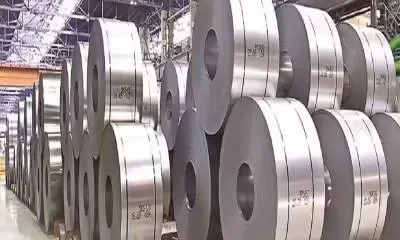
 Uncategorized3 weeks ago
Uncategorized3 weeks agoLloyds Metals, Tata Steel Sign MoU For Strategic Partnership
-
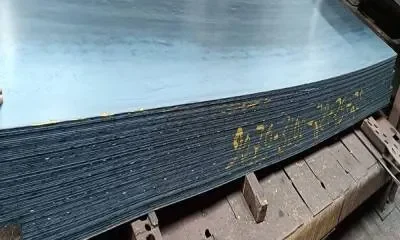
 Uncategorized3 weeks ago
Uncategorized3 weeks agoEnlight Metals Enters Chemical Trading With New Subsidiary


